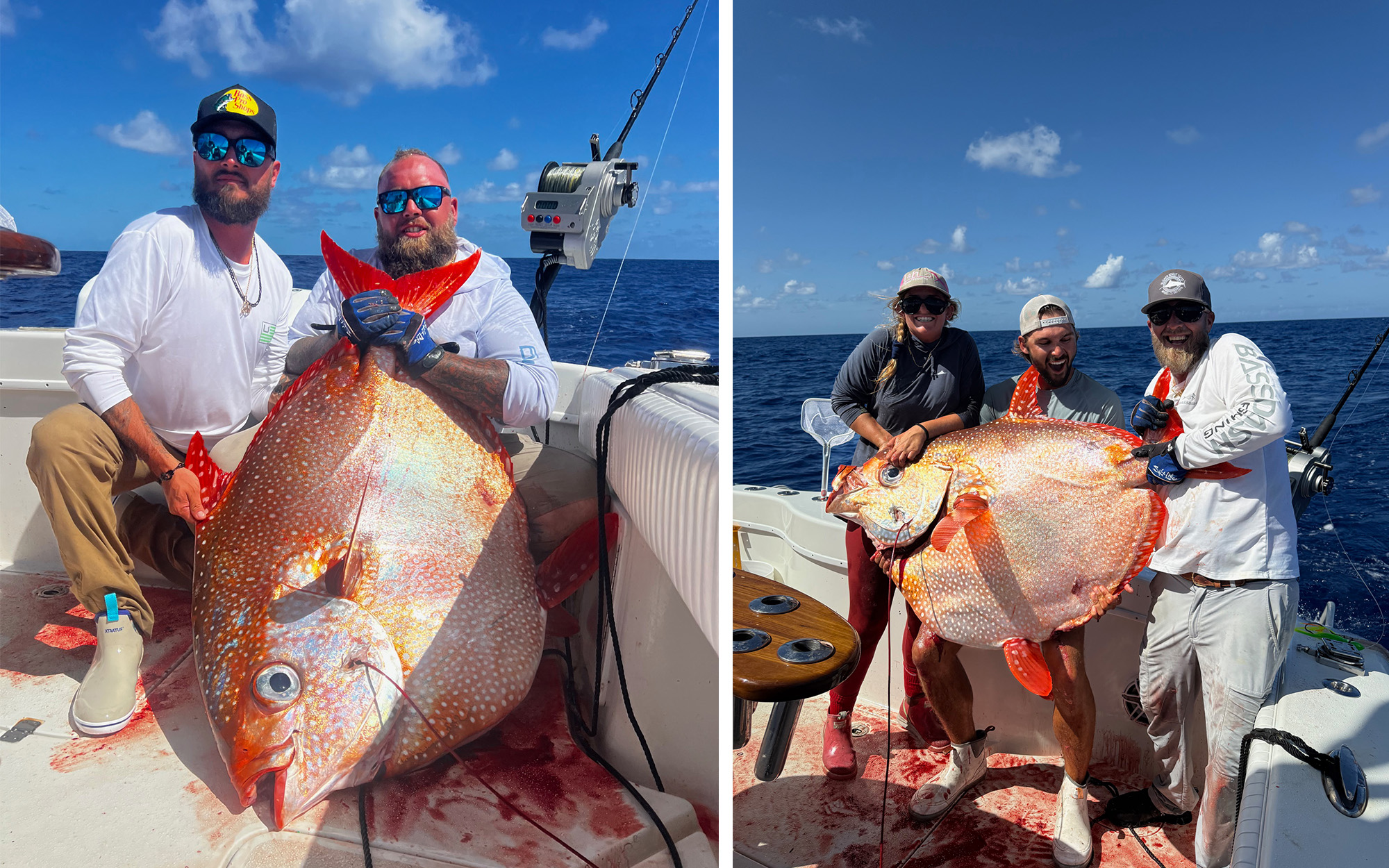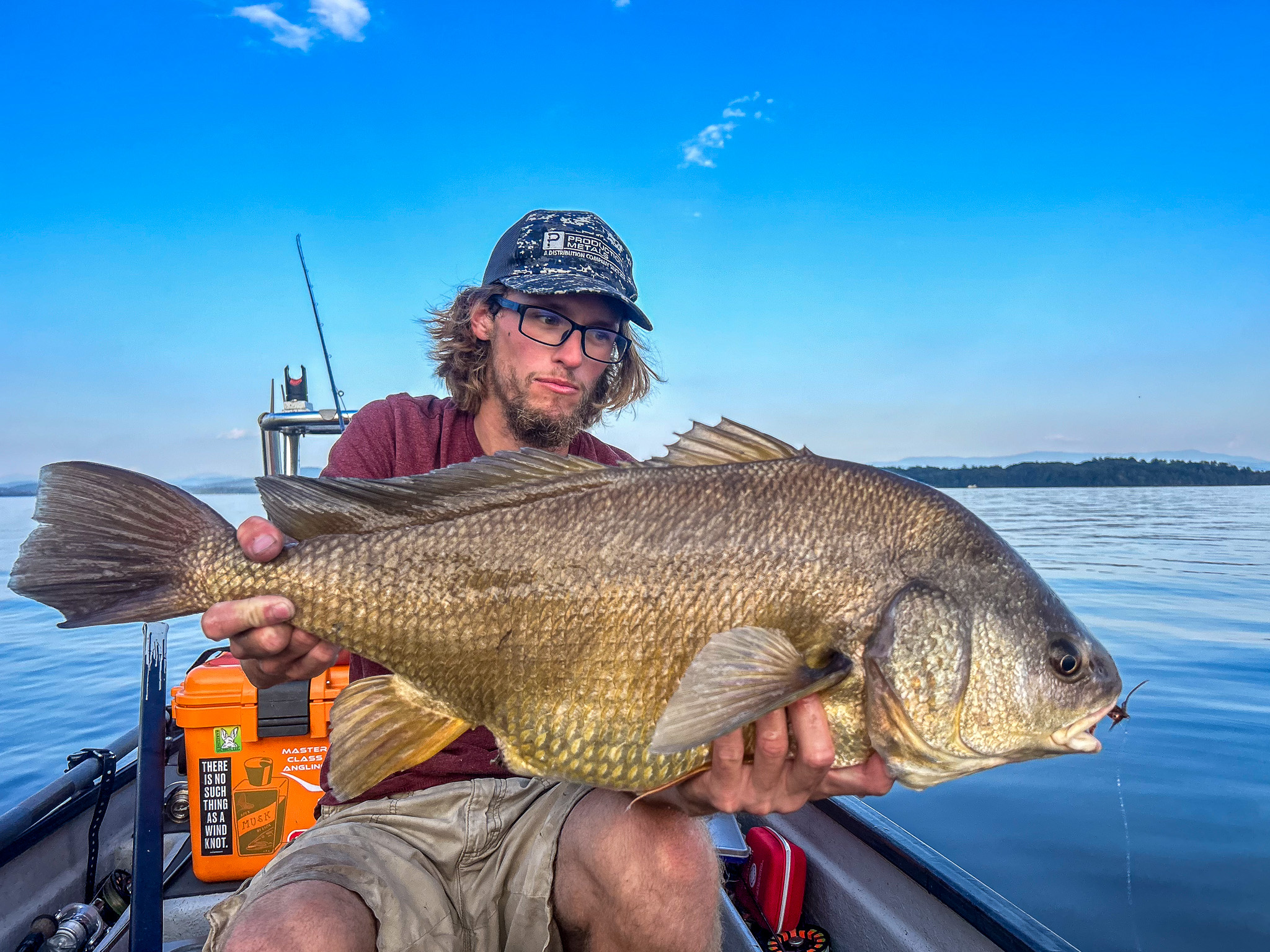Anglers Catch Incredibly Rare Moonfish in Florida

Florida guide Laurel David and Capt. Richard Fairbanks are second-generation fishermen who’ve spent their whole lives in the Ft. Lauderdale area. But neither of them were ready for the rare and otherworldly-looking fish they caught on a charter trip on Father’s Day. The 148-pound opah, also known as a moonfish, was the first one they’d ever held in person. And as far as they know, it’s one of the only fish of its kind ever caught off the Florida coast.
“It’s kind of like a unicorn,” David tells Outdoor Life. “Something so out of the ordinary that … I don’t know. I’ve only heard of one, maybe two [being caught] around here.”
The strange, disc-shaped fish (which is also the only warm-blooded fish species known to man) is more associated with Pacific waters, and is often thought of as a Hawaiian species. While rare in Florida waters, the species has sustainable populations in the Pacific region, where it’s a popular food fish. Hawaii’s commercial fishery accounted for 460,000 pounds of opah in 2021 alone, and the species is not endangered or protected, according to NOAA Fisheries.
But since these pelagic fish spend most of their time at depths of 1,000 feet or more, and are typically only caught by ocean longliners, scientists are still trying to understand their biology and life histories.
And until Sunday, Capt. Fairbanks says, the only time either angler had ever seen an opah was at a fish house in Hawaii. David, who grew up fishing the islands with her parents, says she’d been dreaming about catching one since she was a kid.
Capt. Fairbanks and David, who also fish commercially, operate Family Tradition Sport Fishing. They say Sunday’s charter trip started out like any other. Their two clients, both dads, wanted to get into some swordfish on Father’s Day, so they made an early-morning run to their spot in Fairbanks’ boat, Freebird. Fishing in 1,800 feet of water, they dropped their baits deep and made some drifts with no swords hooked. They were on their last drift of the afternoon and getting ready to wrap things up when the fish bit.
Read Next: Florida Has Become the Budget-Friendly Amazon for Anglers
Judging by how the moonfish fought — it was bulldogging, pulling drag, and diving deep — they both figured it was a swordfish.
“We thought it was a decent one, too, because of how it was pulling the jug underwater,” says Fairbanks. Roughly 45 minutes later, as the opah approached the surface, he still wasn’t quite sure what they had. “Most of our bycatch [when targeting swordfish] is yellowfin tunas or big eye tunas, and that’s kind of what it looked like when it was coming up.”
The glimmering fish got closer, though, and eventually showed its colors. The two fishermen and their first mate, Rex Lane, were speechless.
“She turned pink and orange — you can’t even describe these colors,” Fairbanks says. “They don’t come in a crayon box.”
After the crew gaffed the rare fish and hauled it aboard, the two dads were stoked. (You can hear it in their voice in the short video clip one of them recorded.) Moonfish are considered an “unregulated” species by the Florida Fish and Wildlife Commission. These fish have a default bag limit of two fish or 100 pounds per person per day.
Back on dry land, the crew brought the fish to Captain Clay and Sons Seafood Market, where it weighed 148 pounds on a certified scale. Reed Brand, who works at the market, was as blown away by the catch as they were.
“It’s the equivalent of seeing Bigfoot,” Brand told CBS-12 News Monday. “I think there are more Bigfoot sightings a year than there are opah sightings in Southeast Florida.”
Then came the difficult chore of cleaning the opah. These fish don’t have normal filets, which only adds to their bizarre nature, so the fishermen brought their catch to a professional butcher.
“It had to be broken down like an animal — like a cow,” Fairbanks explains.
He says they got around 15 different cuts of meat off the opah that went to their two clients.
“There was a high loin, a low loin, the rib meat. It also had, like, backstraps,” David adds. “And it had an abductor muscle, where its pectoral fin was, that’s kind of like a brisket … And between us, we didn’t have much experience [dealing] with a fish like this … it was just crazy.”
Read the full article here









